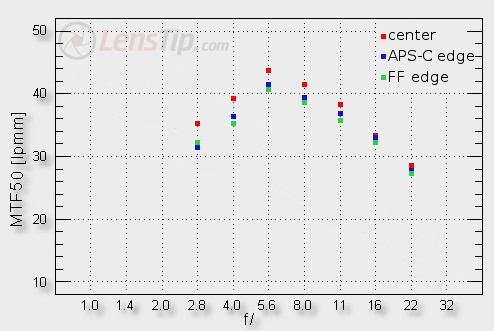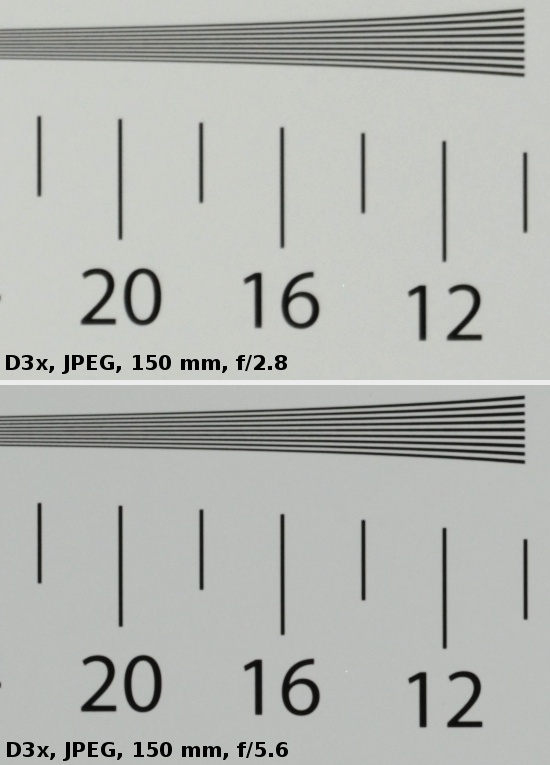Sigma 150 mm f/2.8 APO EX DG OS HSM Macro
4. Image resolution
Let’s check how the tested lens fares in the frame centre, on the edge of the APS-C sensor and on the edge of full frame.

Please Support UsIf you enjoy our reviews and articles, and you want us to continue our work please, support our website by donating through PayPal. The funds are going to be used for paying our editorial team, renting servers, and equipping our testing studio; only that way we will be able to continue providing you interesting content for free. |
- - - - - - - - - - - - - - - - - - - - - - - - - - - - - - - - - - - - - - - - - - - - - - - -
It can be noticed at once that even at the maximum relative aperture the lens doesn’t have any problems with generating images of good quality. On stopping down the situation becomes even better and by f/5.6 the Sigma reaches the level of 44 lpmm. On the one hand you can be a bit disappointed because macro lenses often dazzle with record-breaking results. On the other hand you really shouldn’t carp about the performance here. The quality of the image is very good, momentarily even splendid, and these values are still better than those of the predecessor, so praised by us before.
The question why there are no record-breaking results in the frame centre is answered by the performance on the edge of the frame of the smaller and the bigger sensor. The values we see there are really excellent. The image is useful already at the maximum relative aperture and on stopping down it is hardly worse than that in the centre. By f/5.6, on the edge of the full frame sensor we get as high as over 40 lpmm; such results are so good that I really can’t remind myself of any other lens which has performed better on full frame. Even the Canon 100L Macro, so praised by us, on the edge of full frame got to maximum 38 lpmm and that result was, after all, reached on the EOS 1 Ds MkIII, which, with good lenses attached, can produce MTFs higher by 1-2 lpmm than the Nikon D3x. We can state that the results of the Sigma on the edge of the frame are about 10% better than those of the splendid Canon.
Apparently Sigma knew what it was doing. There are no records in the frame centre but the level still remains high. There are records on the edge, though, so the image is of very good quality across the frame which is important if you e.g. photograph the reproductions.
The crops below were taken from the frame centre of our test chart.
 |






